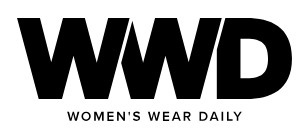
By: Evan Clark | Link to article
The American Eagle and Aerie parent company posted second-quarter gains and offered a more optimistic take on the second half.
American Eagle Outfitters Inc. offered some brick-and-mortar optimism headed into the back half — beating second-quarter estimates and raising its outlook for the year.
The specialty chain’s net income tallied $48.6 million for the second quarter, reversing losses of $42.5 million a year earlier. Earnings per share came in at 25 cents, which was 9 cents ahead of the 16 cents analysts forecast, according to FactSet.
The company’s efforts to trim costs are successfully boosting the bottom line, which has also been helped along by renewed consumer strength after a tougher first quarter.
Sales for the three months ended July 29 inched up modestly to $1.2 billion where a small decline was expected. Sales in stores rose 4 percent, gains that were offset by a 7 percent decline in the online business.
The flagship American Eagle brand saw revenues slip 1 percent to $767 million while Aerie rose 2 percent to $380 million.
In an interview with WWD, Mike Mathias, executive vice president and chief financial officer, attributed the digital declines to a normalization in the business after the COVID-19 rush.
Overall, the business accelerated in late June and early July, with back-to-school looks connecting with shoppers.
“There’s a demand change in general — just a change of consumer spending,” Mathias said. “We’ve seen some general improvement across others in the industry as well. It signals health in general.”
At American Eagle, women’s tops have been selling well, as has denim, a core strength of the chain. Aerie has also been picking up, with gains from the brand’s latest intimate offerings and also activewear and apparel.
For the full year, the retailer is now looking for revenues to increase in the low single digits, an improvement from flat to a low-single-digit decline previously forecast. Operating income is projected to range from $325 million to $350 million, up from the $250 million to $270 million seen before.
The outlook includes about $25 million in benefits from the company’s profit improvement initiatives, which Mathias said run the gambit from cost cuts to cost avoidance to other measures that touch most of the margin expense areas.
Inventory, which as of the close of the quarter was down 7 percent in dollars and 11 percent in units from a year ago, remains an area of focus — and one that will help the company navigate changes in consumer mood.
While the consumer is spending now, there are still some worries on the economic horizon as higher interest rates work their way through the economy and student loans start coming due again.
“We’re back to a normalized supply chain,” Mathias said. “We’re able to chase inventory, not front load. That sets us up to deal with these potential fluctuations or any of that volatility with the consumer and stay on the chase mode for inventory.”
Jay Schottenstein, AEO’s executive chairman and chief executive officer, said in a statement: “Looking to the second half, we are excited about future product arrivals, leveraging the positive response to early fall goods and delivering innovative customer connections. At the same time, we are keeping a sharp eye on the consumer environment and planning appropriately.”
